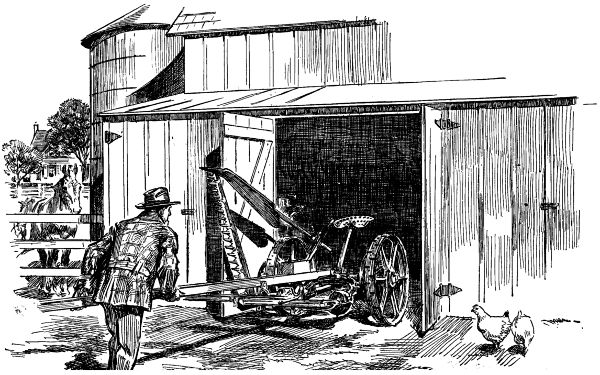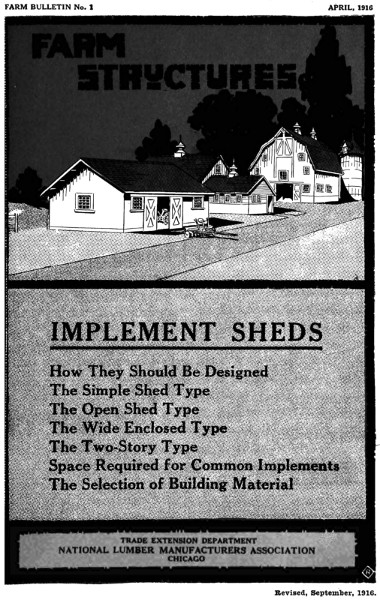

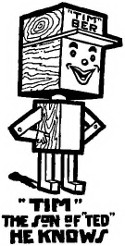
Copyright 1916
National Lumber Manufacturers Association
Over fifty million dollars is lost every year on American farms because implements and machinery are not properly housed. Is part of this wasted on YOUR farm?
Protection of farm machinery in well built implement sheds means dollars earned through dollars saved. On the average farm an implement shed saves annually as much as the income from $1,800 at interest.
by
K. J. T. Ekblaw
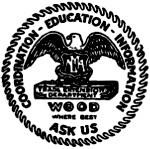
Price, Ten Cents
Published by the
TRADE EXTENSION DEPARTMENT
National Lumber Manufacturers
Association
CHICAGO::ILLINOIS
APRIL, 1916
General Series No. 10
Fourth Edition, February, 1917.

Fig. 1. Exterior of Simple Implement Shed
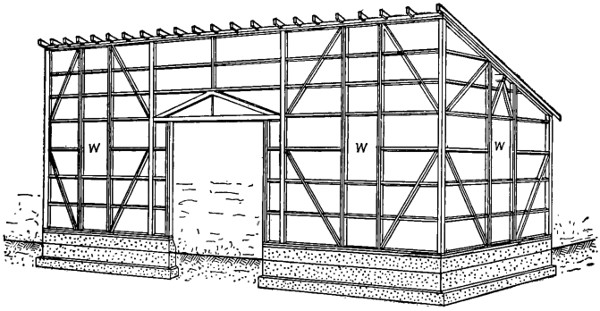
Fig. 2. Perspective of Framing of Simple Implement Shed
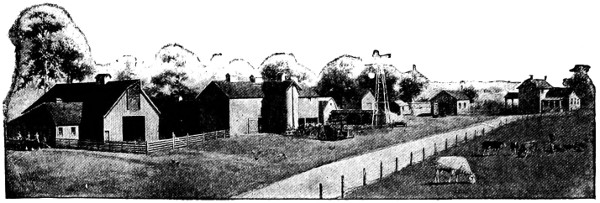
Implement Sheds
By K. J. T. Ekblaw
A very fair indication of the thrift and general prosperity of a farmer is the method he employs in caring for his tools. Shiftlessness, waste, lack of energy, constant buying and heavy burdens of debt will accompany poor care. Good care is an indication of shrewdness, business ability, long-lived machinery, comfortable bank balances and the assurance of a peaceful, prosperous future.
To the progressive man, figures speak more forcibly than does the most persuasive lecturer on economic topics. The report of the United States Census for 1910 contains some figures that bear a distinct message to the farmers of the country. In 1900 the value of all farm property in the shape of farm implements and machinery was $749,775,970; in 1910 this same value had increased to $1,265,149,783, representing an increase of 68.7 per cent. This increase can be ascribed mainly to increased quantity rather than to higher prices, for the increase in price of farm machinery has been comparatively slight. It means that the farmers are realizing the benefits to be derived from the use of labor-saving machinery. In 1900 the acreage of improved land in farms was 414,498,487; in 1910 this became 478,451,750, an increase of only 15.4 per cent. These figures may be a little more significant if expressed in the following way: In 1900 there was $1.80 worth of machinery for each acre of improved farm land; in 1910 this had increased to $2.65, or an increase of over 47 per cent.
These figures will immediately indicate an opportunity for the furtherance of economic agriculture. With so much capital invested in equipment, the American farmer would certainly be a very bad business man indeed if he did not take some means of protecting this equipment to reduce depreciation and to increase its length of life. The question has sometimes been asked, does it pay to house farm machinery? Is it not a better practice not to give any special care to the machinery but use it as long as it will run without care then buy newer and more up-to-date equipment?
The situation bears some consideration. According to Census figures, the average investment per farm in farm machinery is almost exactly $200. This, however, is the case when every sort of farm is included, and since the Census Bureau’s definition of a farm is extremely liberal it would not be practical for our purposes. A fair estimate of the average value of farm machinery on a farm is $1,000. No reliable figures are available to indicate the rate of depreciation of farm machinery; one farmer will take excellent care of his binder and it may do service for twenty or twenty-five years, while another farmer will leave his binder in the middle of the field where the last stalk of grain was cut, and it would be surprising if his machine could operate satisfactorily for more than five seasons. To take ten years as the average life of farm machinery is certainly to be considered conservative.
Most farm machines are well and substantially constructed and will render satisfactory and efficient service with slight repairs for a much longer term of years than the average which has just been given. It is entirely safe to assume that the average length of efficient service can be increased to fifteen years providing proper care is given. It is almost equally safe to assume that the average life of uncared-for machinery will not be much more than five years.
The farmer who has a thousand dollars worth of machinery to which he gives no care and attention will then have an annual reduction in value of $200, besides his interest charge of $60 on his investment or a total debit of $260. The farmer who properly houses his machinery will have an annual deduction of $66.66 for depreciation and the same interest charge of $60. He will have, in addition, an annual charge of $25 for interest and depreciation on his building if it cost $250, or a total of $151.66, which is $108.34 less than that of his improvident neighbor. The careful farmer then may consider that he has in his implement house an investment representing over $1,800 as shown by the saving it brings him; as a simple implement shed can be built for $250, a net profit of an interest-paying $1,550 remains. Putting the problem in another way, on many farms the savings on machinery will pay for a shed in two or three years.

Fig. 3. Details of Simple Implement Shed
Only one wide sliding door is shown, though another smaller door can be inserted if desired. The truss construction shown in Fig. 10 is used above the wide door. Either vertical or horizontal siding may be used, the former being simple and satisfactory construction. The front wall may be omitted in localities where inclement weather is uncommon.

Fig. 4. Exterior of Open Type of Implement Shed
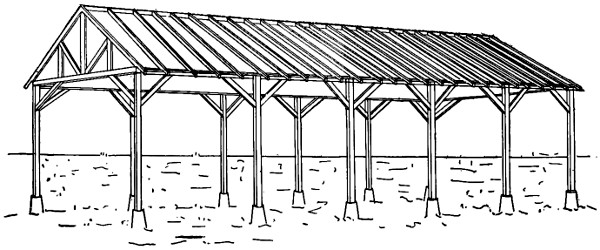
Fig. 5. Perspective of Framing of Open Type of Implement Shed
In view of the fact that the small tractor is becoming an extremely popular source of farm power, special consideration should be given to its shelter. The tractor is an implement that would be extremely likely to be injured as a result of exposure to weather. It is entirely possible that the damage which may be done to this one single machine in one winter’s exposure may be sufficient to pay for the cost of a machine shed which will house all the implements on the farm.
So much for the economic side. The figures that have just been given relate only to a very conservative case. On many farms the saving would be a great deal more. Besides this there are other things of which the value cannot be estimated, such as the benefit of having a machine that will operate when it is called upon to do so; the added value an implement shed gives to the farm; and the additional prestige which will redound to the owner of the farm.
The careful farmer will, of course, find that criticisms of ill-cared-for machinery do not apply to him; he has a machine shed, and knows the value of paint, oil, and grease in extending the life of implements. His equipment always looks new, for as rust breaks through the protecting coat of paint, a new coat is immediately applied; and his plowshares, discs, cultivator shovels, and other bright parts of implements are always given a thorough coating of grease before being put away for the winter. As a result, his implements are ready for business when spring comes and time is valuable.
In preparing the design for machine sheds one of the first considerations is that of economy. A machine shed is a building which is almost always used for no other purpose than to shelter machinery. It is not like a bin for the storage of grain where strength is an exceedingly important factor nor is it like a barn where so many operations are carried on within; consequently the simplest and cheapest structure that is consistent with reasonable durability is the one that is the most advisable. Wood is a product available in every section and is the cheapest and most suitable material for the construction of an implement shed.
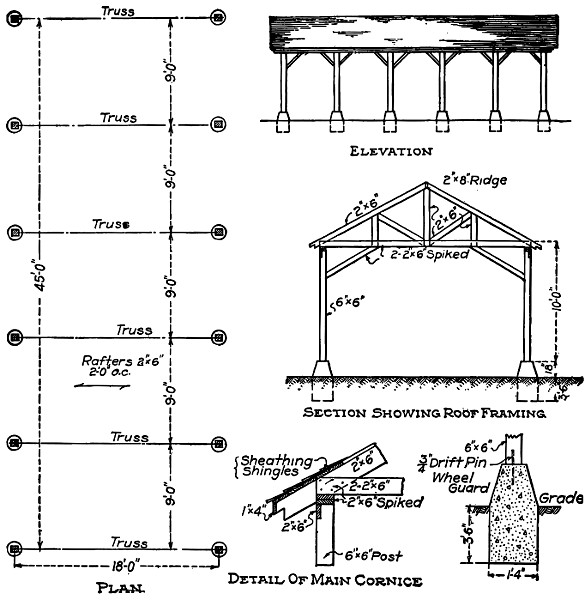
Fig. 6. Details of Open Type of Implement Shed
Framing of 6x6 posts, thoroughly braced. Ends may be boarded or left open as desired. Foundation piers act as wheel guards. Width between posts can be varied to suit requirements.
Paint, the great preservative, should be applied to all
farm buildings. The initial cost of two coats of good paint
is not prohibitive; the durability of the wood may be increased
almost indefinitely if the surface is kept covered to
prevent the ingress of the spores of decay. The prosperous
farmer’s buildings are always kept painted, not only to preserve
the wood, but to improve the appearance of the buildings
themselves.
On new wood, two coats are usually sufficient. The first coat should contain mainly oil, with a small amount of the base and coloring pigments, so that it will permeate every pore; the second coat should be heavier, containing less oil and more pigment. Surfaces that have been painted can be kept in good condition by the occasional application of a single coat.
The planning of an implement shed will require data as to the number and size of machines and the amount of space that each will occupy. The arrangement of the machines so as to make them easily accessible at times when they are most needed is also important, e. g., a binder being used but once a year may well occupy a far corner, leaving a space near the door for the mower and plow, implements which are used oftener and for longer periods than the binder. The manure spreader, wagons and buggies are used so much throughout the year that they should be especially accessible. Table I, pages 19 and 20, gives the floor space required for most farm machines; the height of the machine is also given. Of course, it is entirely possible to crowd machines together as they are put into the shed, and so much saving in room can be accomplished in this way that little clearance space need be left. For instance, the outer edge of a binder platform can be easily raised several feet, provided a pair of reel slats with the attached arms are removed, and in this space beneath the platform can be stored such implements as hand drill, walking plows, etc. Similar opportunities for economy in space can very easily be found.
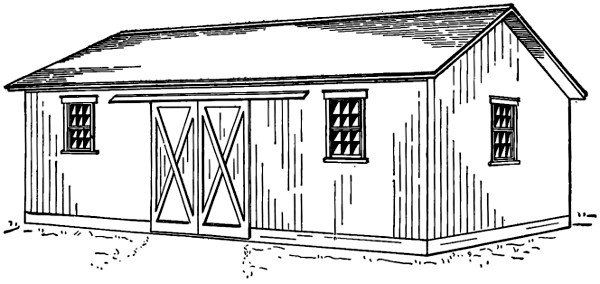
Fig. 7. Exterior of Wide Enclosed Implement Shed
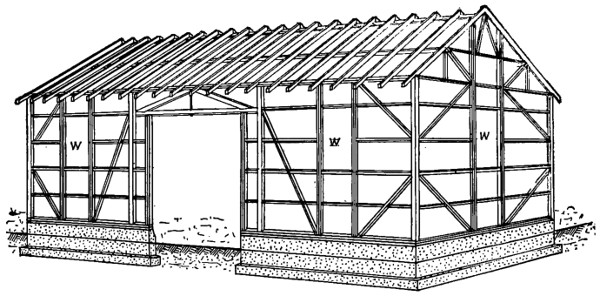
Fig. 8. Perspective of Framing of Wide Enclosed Implement Shed
In general the construction of a machine shed is that of
the very simplest; yet utility and beauty can be very easily
combined with simplicity. Since the building is not subjected
to any heavy load, as would be the case with a crib or a
barn, the framing is just sufficiently strong to safely hold the
wall and roof covering and to prevent collapse of the building
from wind or snow and ice loads. Very often 2x4’s or 4x4’s
constitute the studs or posts and no heavier stock is used
throughout the building. In wide sheds it may be found
necessary to use larger stuff and especially in the plate above
the wide doorway. A two-story machine shed will, of course,
require heavier and more substantial framing, but a two-story
shed is comparatively rare. A floor may or may not
be used as the owner may desire. It is likely to prove somewhat
expensive in first cost and in maintenance, though for
convenience it is much to be desired, especially if any repair
work is to be done in the building.
The roof may be of almost any style from the simple single pitch shed roof to the modified shed roof or the ordinary double pitch gable roof. It is desirable that the pitch should be not less than one-quarter in order to get the greatest life out of the shingles, which are likely to collect moisture and give shorter service where the pitch is quite flat. The foundation of a machine shed will naturally not be designed for great strength except in the case of a two-story structure, since the only load which it has to support is that of the superstructure itself. A footing 12 to 16 inches wide at the bottom and extending down a foot or 15 inches into solid soil will support a building of this kind. However, if a concrete floor is put in the building as is sometimes done in the more expensive ones, it will be well to extend the foundation wall and footing to a point below the frost line, which will vary from a foot to three feet according to climate.
Sills are usually not necessary in the simple framing of machine sheds. The posts can be set directly upon foundation walls and fastened in any one of many different ways that have been devised. Timbers are more subject to decay at the ends than elsewhere, consequently it is advisable to treat them at this point with a preservative such as creosote. This will add greatly to the durability. The foundation wall should be brought up some distance above the ground so as to further protect the bottom timbers from moisture. This above-ground extension must be omitted at doorways.
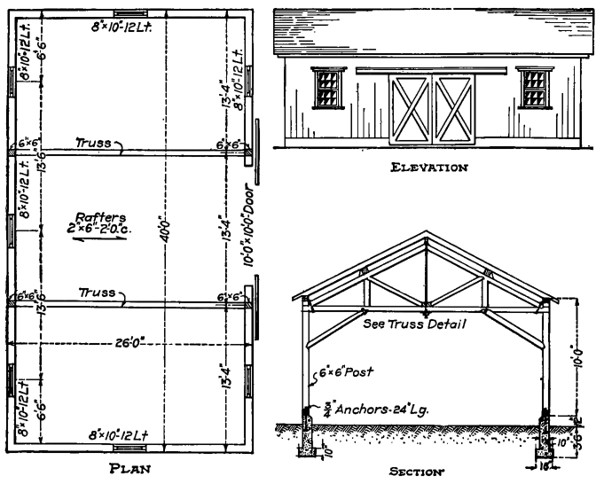
Fig. 9. Details of a Wide Enclosed Implement Shed
Strong framing is necessary to insure durability in this structure. Members may be solid or built up. Details of one form of roof truss are shown in Fig. 11. Note solid foundation. Doors may be located to suit requirements.
One of the most serious problems in the design of a
machine shed is the insertion of doors. Wide doors are an
absolute necessity, especially for certain machines. An
eight-foot door is large enough for the majority of farm
machines, even allowing the modern binder with its folding
grain dividers to enter in safety. The wide drill, the rake,
and several other implements require a much wider door than
this and it may be necessary to provide an opening 12 or
even 14 feet wide. This leaves a long unsupported section
of the plate directly above the doorway. To keep it and the
roof from sagging, special provision must be made either by
putting in an exceptionally strong plate at this point, by
building up a small wooden truss, or by making a truss of
wood and iron as shown in the illustration. (Fig. 10.)
The doors themselves should be very solidly and substantially made. It is a matter of good practice to have as few doors as possible. In the average machine shed one 8-foot door and one 12 or 14-foot door are sufficient to meet requirements. A door wider than four feet should not be swung on hinges under any circumstances, as it is sure to pull out the hinges or to sag very badly. Sliding doors of good construction are to be recommended in preference to hinged doors (Fig. 12). It is entirely possible to make a good close-fitting door of this type and there need never be any trouble in its operation.
The use of other buildings for the storage of farm implements is not a desirable procedure except in certain instances, such as keeping wagons in the driveway of cribs, leaving the spreader at the end of an alleyway of a barn for convenience in loading, etc. In general, other buildings are much more expensive than a machine shed and those portions of them devoted to the storage of farm implements could in most cases be more profitably used, especially when the very small unit floor-space cost of a machine shed is taken into consideration. Then, too, if a special place is not provided for the implements, the farm animals may come in contact with them, causing injury of the animals or damage to the machines.
The needs of the average farm
for a cheap, easily built implement shed are met by this building.
Illustrations of this type of shed are shown in Figs. 1, 2
and 3. The framing consists of 6x6 posts set on a light
1:2½:5 mixture concrete foundation at intervals of eight
feet, the plate consisting of two 2x6’s. Short diagonal braces
can be set in underneath between the plate and the post in order
to give the plate further support. The rafters for a span
of 18 feet should be at least 2x6 and better 2x8, set not less
than two feet apart on centers. The wall covering may consist
of vertical siding, either 10 or 12-inch boards, with the
cracks covered by ogee battens. For horizontal siding,
studs are necessary; these should be 2x4’s, placed not over 3
feet apart. Either drop-siding, German or novelty siding or
ordinary weather-boarding may be used satisfactorily, but
the latter is somewhat light for a building of this kind and
would probably not be as durable as the others mentioned.
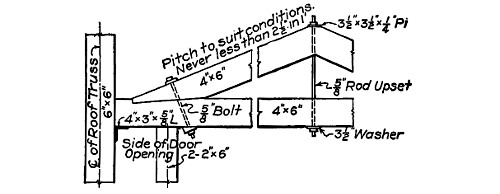
Fig. 10. Detail of Truss Over Large Doors in Implement Shed
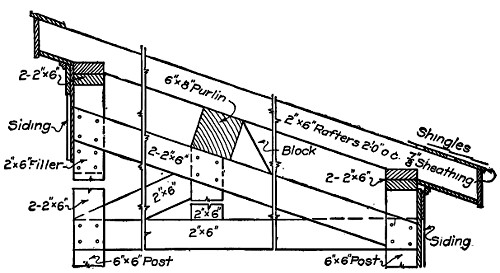
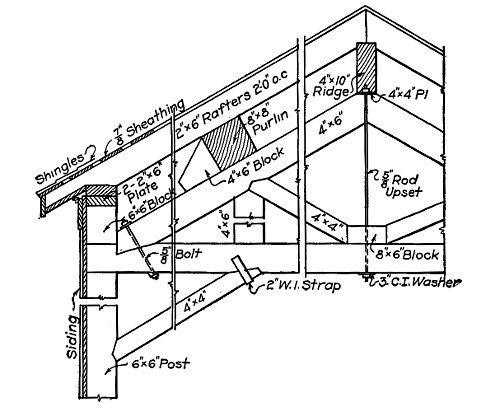
Fig. 11. Roof Truss Details
The upper illustration (Fig. 10) shows a method of building a truss above wide doors to prevent sagging of roof. It may be varied to suit circumstances.
The roof trusses shown in Fig. 11 suggest methods of framing for wide sheds, as in Fig. 3 and Fig. 9.
The building may be entirely enclosed, having the doors on the high side. The practice of enclosing the building entirely is generally to be recommended, though sometimes for the sake of economy and convenience and in localities where the winds are very constant in their direction, it may be advisable to omit part of the exterior wall covering, leaving one side open, this side being the one opposite to the direction from which the prevailing winds come.
Under some circumstances the open shed type of building (shown in Figs. 4, 5 and 6) will be the more suitable. This is especially true where wagons, racks and spreaders are used frequently. The framing of the building consists simply of 6x6 posts set on concrete piers at intervals of 9 feet. On these are set 2x6 rafters supporting a double pitched gable roof. The building is opened on both sides but both ends may be enclosed.
This building is extremely convenient, although it does not give very thorough protection to the machines. A wagon or spreader can be driven directly through one of the bays and horses unhitched outside. With a building 18 feet wide and eaves overhanging one foot, the implements will be protected from all but driving rains, though sweeping snow will have free access to the interior. The posts are placed nine feet apart in order to provide sufficient room for driving a team through. It may be possible to reduce this dimension to eight feet, or to increase it to 10 feet in case a three-horse team is to be driven through. The concrete piers supporting the posts are made conical in shape, acting thus as wheel guards to prevent the hubs of the wheels from striking the posts.
One or more bays of the shed may be enclosed if desired to give adequate shelter to machines, such as mowers, binders, etc., which would suffer from exposure. Of course, the shed as well as the preceding one can be built to any length desired, though a building more than four times as long as it is wide will present a somewhat peculiar appearance on account of the long, low roof line.
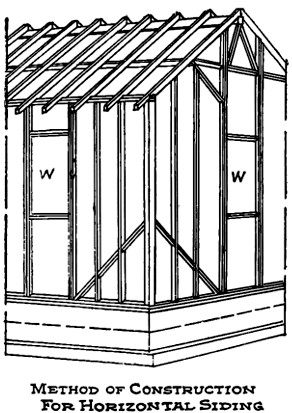
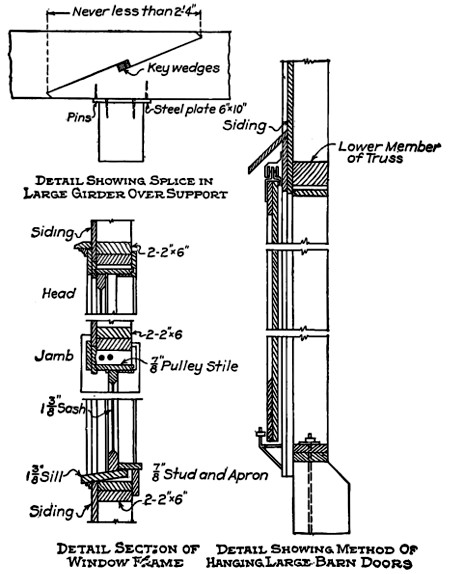
Fig. 12. Construction Details
These details apply in general to the implement shed plans. The girder splice shown makes a firm, solid joint. If double hung sash are used, standard window framing is employed, as shown. Wide doors are always hung on a track; the detail shows weather strip at top, and bracket with roller at bottom to keep door from swinging out.
A better and a little more expensive type of implement shed, yet one perhaps better suited to the average farm is shown in Figs. 7, 8 and 9. This shed is made 26 feet in width and as long as may be necessary, although a building 26x40 will usually be found sufficiently large to house the machines on the average general-purpose farm. The framing of this shed is a little more substantial than in the types previously discussed, consisting of 6x6’s with 4x6 plates. Should horizontal siding be used, it will naturally follow that instead of using these posts, 2x4 studs will be employed as previously described in the simple shed type on page thirteen. The height of the walls should be not less than 10 feet, which with the gable roof will make the building a little more attractive in appearance than the one previously described. A span of 26 feet is almost too great for the adequate support of the roof unless some device such as truss bracing and purline is used to give the rafters additional stiffness. (Fig. 11.)
Experience has shown that the two widths—18 feet and 26 feet are peculiarly adaptable to the dimensions of the various farm machines. Using the 26-foot width, considerable opportunity is given for the utilization of the floor space, since a wider floor area unsupported by posts is available. As far as possible, interior posts should be avoided, for they interfere very seriously in the placing and moving of machinery.
As stated before, the use of a two-story machine shed is rather rare, for two reasons: First, the additional expense in material and labor, and, Second, the difficulty of getting machines up to the second floor. The only advantage that is gained is the doubling of the floor space under the same roof.
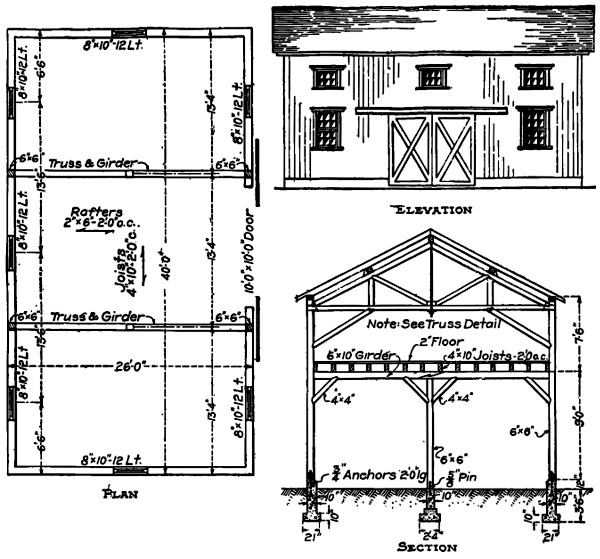
Fig. 13. Details of Two-Story Implement Shed
The framing in this type of shed must be unusually strong and substantial. The girders and, in fact, all framing members, may be either solid or built up. A central post is necessary in each framing unit.
The construction of the building (illustrated in Figs. 13,
14 and 15) will necessarily be rather substantial. The framing
may consist of 6x6 posts and 4x6 girts, which should be
securely joined in order to give rigidity to the structure.
The girts are located at vertical intervals of not to exceed
5 feet, so as to afford good nailing for vertical siding. If
horizontal siding is used, the girts may be spaced wider,
say, one each at the top, bottom, and middle of the post, while
2x6 studs are set in on which to nail the boards. Diagonal
bracing is a decided advantage. The building may be constructed
either 18 or 26 feet wide, and it is seldom that a
building longer than 40 feet will be necessary. The foundation
should be much more substantial than in the types
previously described. It should extend well below the frost
line and be almost as strong as that used for barns.
The second floor will be used for the storage of the lighter machines such as small plows, harrows, drills and all the lighter tools which make up the farmer’s equipment; while the first floor will be utilized for the storage of the heavier machines such as binders, wagons, etc. Getting the lighter machines up to the second floor may be accomplished in one of two ways. An ordinary block and tackle can be utilized either through an outside door in the gable of the roof or through a hole in the floor in the interior of the building. If space is available the construction of a rather steep runway outside the building and leading to the second floor may be advantageous. This runway can be constructed of rather light material, using a pair of 4x6’s for joists, and flooring them with rough 2-inch stuff. An angle of 30 degrees with the horizontal will make it possible to pull machines up the runway with only a small amount of labor. This arrangement has been found to be superior to the use of a hoist. It can be used to the best advantage when the shed is located on the slope of a rather steep hill.
TABLE I.
Floor Space and Height of Space Required to House Common Farm Implements.
| Implements— | Floor Space in Feet |
Height of Space in Feet |
||
|---|---|---|---|---|
| Plows— | ||||
| Walking | 8x3 | 3 | ||
| Sulky and horse gang (tongue off; add 10 ft. for tongue) | 8x6 | 4 | ||
| Engine gang | 16x7 | 5 | ||
| Harrows— | ||||
| Spike tooth, per section | 5x5 | 2 | ||
| Spring tooth, per section | 5x4 | 1 | ½ | |
| Single disc, 8 ft. with truck (tongue off) | 6x9 | 4 | ||
| Double disc, 7 ft. with truck (tongue off) | 8x8 | 4 | ||
| Weeder— | ||||
| (Thills on) | 13x8 | 4 | ||
| Grain Drills— | ||||
| 12x7 (tongue off; add 10 ft. for tongue) | 5x8 | 5 | ||
| 16x7 with press attachment (tongue off) | 7x11 | 5 | ||
| Rollers— | ||||
| Smooth | 3x10 | 4 | ½ | |
| Corrugated, single (tongue off; add 10 ft. for tongue) | 3x10 | 4 | ||
| Corrugated, double | 4x8 | 4 | ||
| Corn Planter— | ||||
| Two row (tongue off; add 10 ft. for tongue) | 5½x6 | 3 | ½ | |
| Cultivators— | ||||
| Walking, one horse | 7x2 | 3 | ½ | |
| Riding, single row (tongue off; add 10 ft. for tongue) | 8x5 | 4 | ||
| Riding, two row (tongue off; add 10 feet for tongue) | 8x10 | 4 | ||
| Alfalfa (tongue off; add 10 ft. for tongue) | 7x6 | 5 | ||
| Mower— | ||||
| 6 ft. (tongue off; add 10 ft. for tongue) | 5x6 | 7 | ||
| Binders— | ||||
| Grain, 8 ft. (tongue truck off) | 8x14 | 7 | ||
| Grain, 6 ft. (tongue truck off) | 8x12 | 7 | ||
| Corn (tongue off; add 11 ft. for tongue) | 13x6 | 7 | ||
| Hay Rakes— | ||||
| Self-dump (thills off) | 5½x11 | ½ | 5 | |
| Side-delivery (tongue off; add 10 ft. for tongue) | 13x9 | 5 | ||
| Tedders— | ||||
| Kicker (tongue off; add 8 ft. for tongue) | 5½x8 | 5 | ||
| Combination (see side-delivery rakes) | ||||
| Hay Loader | 14x9 | ½ | 9 | |
| Ensilage Cutter, 20-ton (tongue off) | 11x5 | ½ | 7 | |
| Corn Shredder, 8 roll | 20x8 | 9 | ||
| Corn Sheller | 20x8 | 11 | ||
| Hay Press | 16x6 | 6 | ||
| Grain Separator, 32-inch | 26x8 | 8 | ½ | |
| Clover Huller | 24x8 | 8 | ||
| Gasoline Tractor, 20-4 H. P. | 15x9 | 9 | ||
| Gasoline Tractor, 10-20 H. P. | 12x8 | 8 | ||
| Portable Engine, 6 H. P. | 9x5 | 6 | ||
| Fanning Mill, 24-inch | 4x3 | ½ | 5 | |
| Wagons— | ||||
| Farm gear (tongue off; add 10 ft. for tongue) | 11x5 | ½ | 4 | |
| Wagon with box and top (tongue off) | 11x5 | ½ | 5 | ½ |
| Wagon with box and tip top (tongue off) | 11x5 | ½ | 6 | ½ |
| Wagon with hay rack (tongue off) | 16x7 | ½ | 5 | |
| Buggies— | ||||
| One seated (thills up) | 8x5 | ½ | 7 | |
| Two seated (tongue off) | 10x5 | ½ | 8 | |
| Grain Dump (knocked down) | 12x4 | 4 | ||
| Potato Machinery— | ||||
| Planter (tongue off; add 9 ft. for tongue) | 5x3 | 4 | ||
| Sprayer, two wheeled barrel (thills off) | 6x6 | 5 | ||
| Digger, wheeled, elevator (tongue off) | 13x4 | 3 | ||
| Automobiles— | ||||
| Small | 11x6 | 7 | ||
| Large | 14x7 | 8 | ||
| Phosphorus Distributor, 1,000 lbs. (tongue off; add 10 ft. for tongue) | 4x10 | 4 | ||
| Manure Spreader, 50 bu. (tongue off; add 10 ft. for tongue) | 17x7 | 6 | ||

THIS?
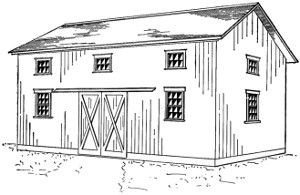
Fig. 14. Exterior of Two-Story Implement Shed
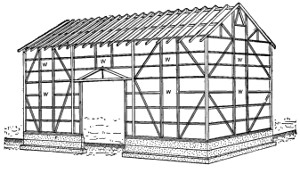
Fig. 15. Perspective of Framing of Two-Story Implement Shed
OR THIS?
The Automobile and Family Carriage Are Kept Under Cover. Is This Fair to the Implements Which Make the Farm Pay?
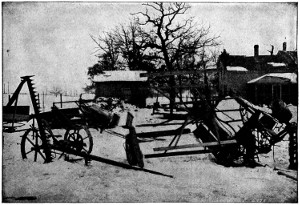
Fig. 16
Courtesy Tractor Farming.
“When it comes to actual waste, the Great American Desert with its constant canopy of blue sky over it has very little on the Great American Machine Shed. The chief difference is that the former is found in a particular locality only, while the latter extends from coast to coast. Both are in the open, both represent zero in profitable and economical usage, and both need the undivided attention of conservation experts.”—Tractor Farming.
Wood “Where Best”
The legitimate use of lumber where it is best, or by proper selection or treatment can be made to serve economically and safely, is the aim of the lumbermen in publishing a series of bulletins on Farm Structures. Wood has for so long been the most widely used building material that its availability and importance have either been taken for granted or lost sight of. It is helpful to review the outstanding features of the present situation:
Wood remains the most universal, most adaptable building material in the world.
The supply is ample for all requirements, and the kinds and grades best suited for all purposes are obtainable everywhere.
In cost it remains one of the cheapest materials.
It is the lightest building material known, and the strongest, weight for weight.
Its qualities are known; it is easy to work; it can be cut and shaped by any one into the myriad uses required for the shelter and comfort of man.
There is no material more beautiful in appearance, more susceptible to artistic finish, nor which is as productive of sentiment and satisfaction for home building.
Wood is a non-conductor of heat,—cool in summer and warm in winter.
The relative qualities of durability, serviceability and workability should be considered in selecting wood for homes and farm buildings. Consult the local lumber dealer. His knowledge and advice will assure cheaper, more stable buildings.
Except where naturally durable woods are available, a preservative treatment will prove economical for timber exposed to moisture and decay, as sills, basement flooring, fence posts; and in similar situations.
Other Farm Bulletins.
Other Bulletins in this series are upon:
Dairy and General Purpose Barns
Garages
Poultry Houses
Farm Residences
Ice Houses
Silos
Grain Storage Buildings
Swine Houses
The Preservative Treatment of Farm Timbers
Ask for those that will be helpful to you. Address:
NATIONAL LUMBER MANUFACTURERS
ASSOCIATION
Lumber Exchange
CHICAGO
